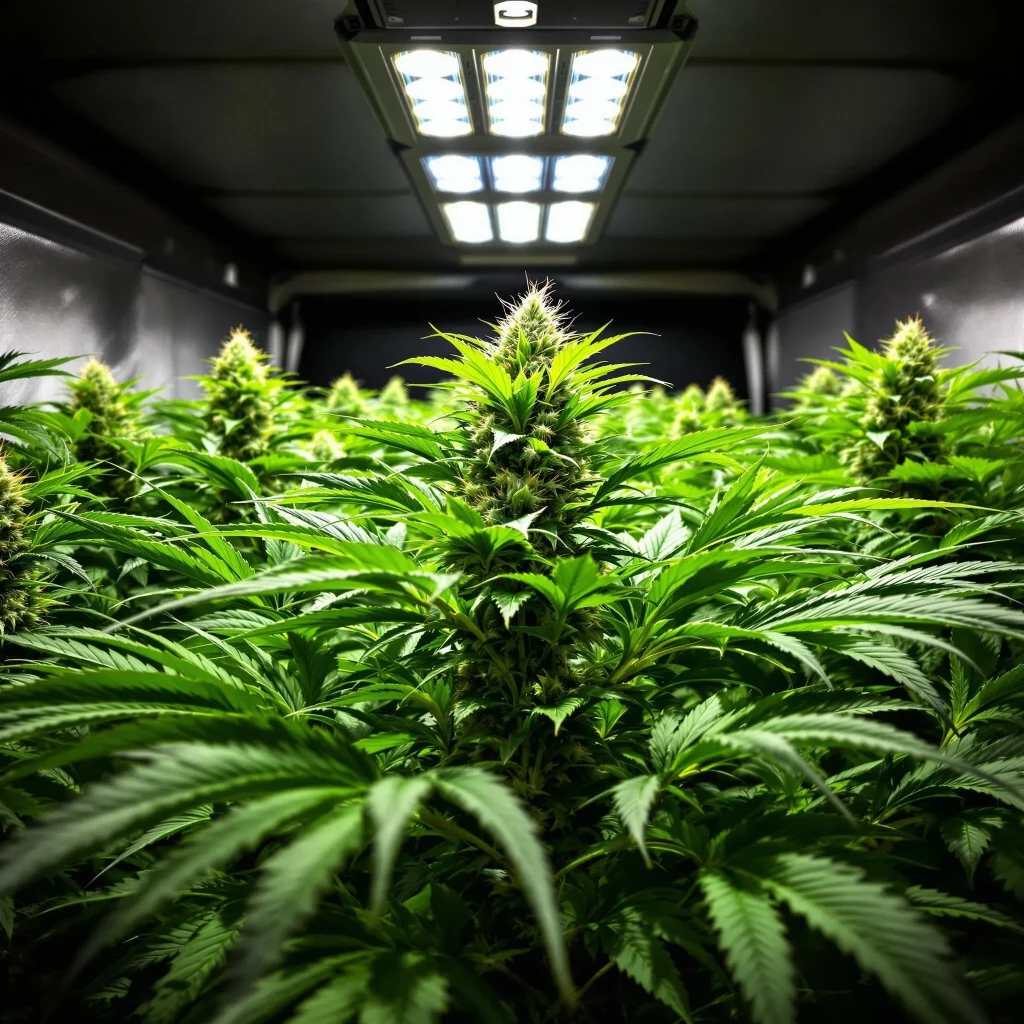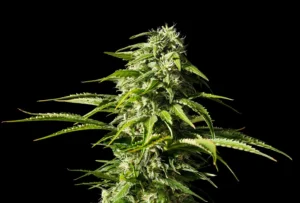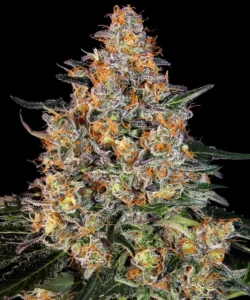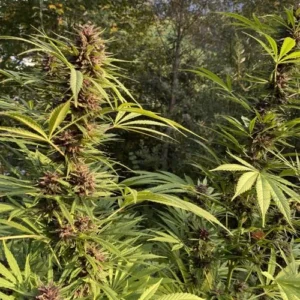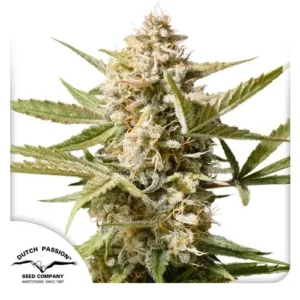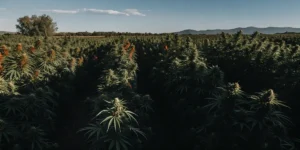Why CO2 is Important for Cannabis Growth
Using CO2 for a grow tent isn’t just a luxury; it’s an effective way to take cannabis growth to the next level. Carbon dioxide, or CO2, is essential for photosynthesis, the process that allows plants to produce energy from light. By boosting the CO2 levels in your grow tent, you can enhance growth, improve plant health, and ultimately increase yield.
How CO2 Enhances Photosynthesis in Cannabis
Cannabis plants need CO2 to fuel photosynthesis. When you increase the CO2 in your grow tent, you’re providing the building blocks that cannabis plants convert into energy. Higher CO2 levels allow plants to absorb more light and produce more energy, leading to faster growth and stronger stems and branches.
Recommended Strains
Big Bull Strain
|
|
THC | 18% - 20% (Medium) |
|
|
Lineage | Early Pearl x Skunk x Black Domina |
|
|
Type | Feminized |
|
|
Height | 3.28 ft | 1 m |
|
|
Yield | Medium |
|
|
Yield Indoor | 1.47 oz/ft² | 450 g/m² |
|
|
Yield Outdoor | 21.16 oz/plant | 600 g/plant |
|
|
Flowering Time | 8 - 9 weeks |
|
|
Phenotype | 60% Indica / 40% Sativa |
|
|
Effects | Relaxed |
|
|
Flavors | Sweet, Floral |
Bubba Kush Strain
|
|
THC | 29% - 30% (High) |
|
|
Lineage | Afghan Kush Landrace x OG Kush |
|
|
Type | Feminized |
|
|
Height | 5.74 ft | 1.75 m |
|
|
Yield Outdoor | 52.91 oz/plant | 1500 g/plant |
|
|
Flowering Time | 8 - 9 weeks |
|
|
Phenotype | 70% Indica / 30% Sativa |
|
|
Effects | Euphoric, Relaxed, Calming |
|
|
Flavors | Hashish, Sweet, Earthy, Spicy |
This extra CO2 is especially important during the flowering phase when plants require more energy to produce dense buds. With CO2 for grow tents, you can create an environment where your plants thrive and yield maximum results.
How to Add CO2 to Grow Tent
Adding CO2 to a grow tent requires a controlled approach to ensure plants can actually use the extra carbon dioxide. CO2 should be released during lights-on periods only, as photosynthesis does not occur in darkness. The grow tent should be sealed or semi-sealed to prevent CO2 from being immediately exhausted by ventilation systems.
Before adding CO2, growers should ensure strong lighting, stable temperatures, and proper nutrient availability are already in place. Without these conditions, additional CO2 will not improve plant performance.
Benefits of CO2 Enrichment for Grow Tents
The benefits of CO2 enrichment go beyond just faster growth. Increased CO2 levels can make cannabis plants more resilient and able to withstand higher temperatures, which allows you to maximize your grow lights’ intensity without stressing the plants. This resilience means plants can produce bigger, healthier buds with enhanced flavor and potency.
Another benefit is that CO2 enrichment shortens the time needed to reach harvest. By helping plants grow faster, you can complete growth cycles more quickly, allowing for multiple harvests over the year. For growers aiming for efficiency, CO2 for grow tents is a game-changer.
CO2 for Grow Tent
CO2 supplementation in grow tents works best when ambient levels are increased from the natural average of around 400 ppm to an optimal range of 1,200–1,500 ppm. At these concentrations, cannabis plants can photosynthesize more efficiently, provided light intensity and temperature are properly adjusted.
Grow tents using CO2 often operate at slightly higher temperatures, as elevated CO2 allows plants to tolerate and benefit from additional heat. This synergy between CO2, light, and temperature is key to maximizing growth potential.
Signs Your Grow Tent Needs Additional CO2
Cannabis plants provide visual cues when they need extra CO2. Common signs include slower-than-expected growth, thin stems, and less dense buds. If your plants look weak or if bud formation is taking longer than usual, it may be time to consider CO2 for your grow tent. You might also notice that your plants are not responding as strongly to high light levels, a sign they lack the CO2 needed to use that energy effectively.
When adding CO2 to your grow tent, remember that plants can only benefit from it when there is sufficient light. Without strong lighting, CO2 won’t be as effective, so ensure your lighting setup complements the CO2 levels for best results.
When to Add CO2 to Grow Room
CO2 should not be added during the seedling or early clone stage. Young plants lack the metabolic capacity to utilize elevated CO2 efficiently. The ideal time to begin CO2 enrichment is during the vegetative stage, once plants have developed multiple nodes and a healthy root system.
CO2 becomes even more valuable during flowering, when energy demands increase significantly due to bud development.
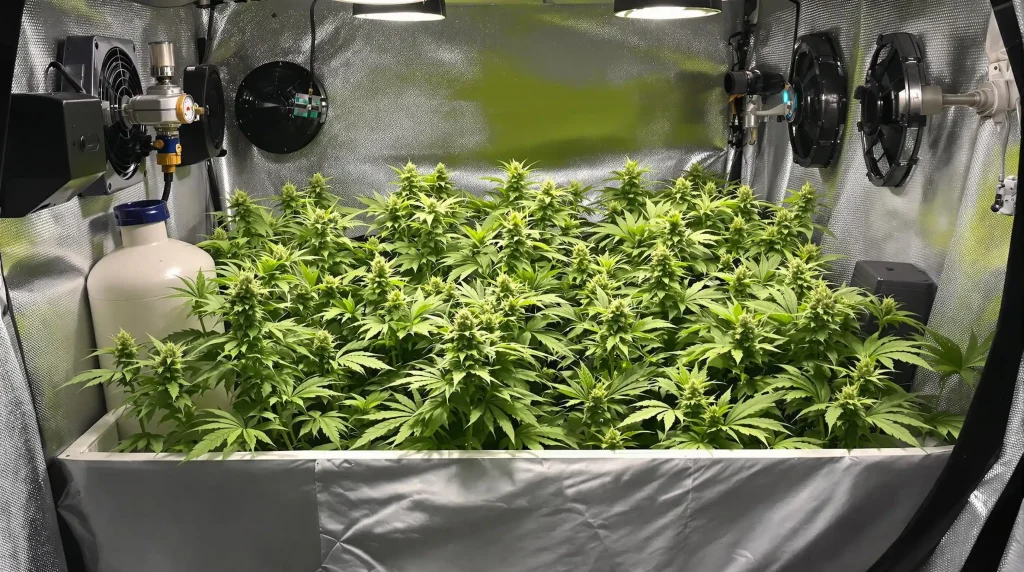
When to Use CO2 in Grow Room
CO2 should be used only in controlled environments where airflow can be managed. Grow rooms or tents with constant air extraction may lose CO2 too quickly, reducing effectiveness. Many growers reduce exhaust cycles during CO2 release and rely on internal circulation fans to distribute CO2 evenly across the canopy.
CO2 enrichment should always be paired with environmental monitoring to avoid inefficiencies or plant stress.
Different Methods for Adding CO2 to a Grow Tent
Adding CO2 to a grow tent can be achieved in several ways, each with its own advantages. Choosing the right method depends on your grow tent’s size, your budget, and your experience level.
CO2 Tanks and Regulators for Precise Control
CO2 tanks with regulators offer the most precise control over CO2 levels in your grow tent. With a tank setup, you can adjust the CO2 release based on your plants’ needs, allowing you to keep levels stable for optimal growth. This method works well for larger grow tents where precise CO2 control is essential.
Using a CO2 tank also ensures that you’re using pure CO2, which gives you consistent results. Although this setup requires an initial investment, the control and efficiency make it a popular choice for serious growers looking to maximize the benefits of CO2 in a grow tent.
Best Way of Adding CO2 to Tent Grow
For most tent growers, the most efficient method of CO2 supplementation is using a compressed CO2 tank combined with a regulator and controller. This setup allows precise dosing and prevents over-enrichment.
CO2 bags and DIY solutions can offer mild supplementation for small tents but lack accuracy and consistency compared to regulated systems.
CO2 Bags and Pads for Small-Scale Grow Tents
For small grow tents, CO2 bags and pads provide an affordable, low-maintenance way to introduce CO2. CO2 bags, such as mushroom-based options, release CO2 naturally over time, providing a gentle boost without the need for tanks or regulators. They are easy to set up, just hang the bag in your tent and let it do the work.
CO2 pads are similar but more compact, making them ideal for tight spaces. These pads release CO2 when they come into contact with water, so you can control when and how much CO2 is added. Both CO2 bags and pads are convenient and effective options for hobbyists and small-scale growers.
DIY CO2 Generators: Affordable Options for Beginners
If you’re new to CO2 for grow tents and want a budget-friendly solution, consider a DIY CO2 generator. Homemade CO2 generators typically use ingredients like sugar, water, and yeast, which produce CO2 as they ferment. This method is cost-effective and easy to set up, making it accessible for beginners.
Although DIY generators don’t provide as much control as tanks or bags, they’re a good way to introduce CO2 enrichment. You can also complement this with dried molasses for plants to enhance microbial activity in the soil, further supporting plant health and maximizing nutrient uptake. Just remember to monitor the CO2 output to ensure it meets your plants’ needs without overloading the tent.
CO2 for Cannabis Plants
CO2 plays a direct role in cannabis plant metabolism by driving photosynthesis and energy production. When used correctly, CO2 can increase growth speed, improve stress tolerance, and contribute to higher yields and denser flowers.
However, CO2 is not a replacement for proper cultivation fundamentals. Strong lighting, balanced nutrition, correct humidity, and stable temperatures are essential for cannabis plants to benefit from CO2 enrichment.
Setting Up CO2 in Your Grow Tent
Setting up CO2 properly in your grow tent ensures you get the best results without wasting resources or endangering your plants.
Ideal CO2 Levels for Cannabis Growth
For feminized cannabis plants, ideal CO2 levels are typically between 1,200 and 1,500 ppm (parts per million). At these levels, cannabis can maximize its photosynthesis and energy production, leading to increased growth and yield. During the vegetative and flowering stages, plants benefit most from these elevated CO2 levels. Keeping CO2 levels consistent within this range helps to ensure stable growth.
Using a CO2 monitor is highly recommended, as it allows you to track and adjust CO2 levels in real-time. By keeping your grow tent within this optimal range, you ensure that your cannabis plants have the right environment to thrive.
How to Position CO2 Equipment in the Tent
Proper positioning of CO2 equipment is key to even distribution. Place your CO2 source near the top of the tent since CO2 is heavier than air and will naturally settle downwards. This setup ensures that CO2 trickles down to the plants’ canopy, where it’s needed most.
If you’re using a fan for circulation, position it below the CO2 source to help distribute CO2 evenly throughout the grow tent. Proper circulation prevents CO2 from pooling and creates a balanced atmosphere, maximizing the benefits for each plant.
Safety Tips When Using CO2 in Grow Tents
Safety is essential when using CO2 in a confined space like a grow tent. Elevated CO2 levels can pose a risk to humans if they exceed safe limits, so always monitor the CO2 concentration and provide adequate ventilation if you’re working inside the tent. Avoid entering the tent immediately after CO2 enrichment, as levels may be higher than recommended.
Using CO2 monitors with alarms can alert you if CO2 levels become unsafe. Additionally, make sure your grow tent is equipped with ventilation to regulate CO2 levels, ensuring both plant health and grower safety.
Best Practices for Using CO2 in Grow Tents
Applying best practices when using CO2 in a grow tent helps maximize growth while avoiding common pitfalls.
Maintaining Proper Ventilation with CO2 Enrichment
Ventilation is critical to prevent CO2 from stagnating. Even though CO2 is essential for photosynthesis, it must be balanced with oxygen, which plants need for respiration. A well-ventilated grow tent keeps CO2 circulating and oxygen levels stable, ensuring plants can breathe efficiently.
Set your ventilation system to cycle fresh air regularly, especially during the dark cycle when plants consume oxygen. This balance promotes healthy growth and prevents the tent from becoming overly saturated with CO2, which could stress the plants.
Adjusting Light and Temperature for Optimal Results
Since CO2 enrichment enables plants to absorb more light, it’s beneficial to increase light intensity to make the most of CO2 for grow tents. Stronger lights encourage plants to utilize CO2 effectively, accelerating photosynthesis. Raising temperatures slightly, between 80–85°F, can also enhance CO2 absorption, leading to stronger growth.
However, balance is key, overly high temperatures or light levels can still cause stress. Monitoring and adjusting both light and temperature alongside CO2 ensures that your grow tent remains an optimal environment for cannabis cultivation.
Monitoring CO2 Levels for Consistent Growth
Consistency is crucial when using CO2 for grow tents. Sudden fluctuations in CO2 levels can disrupt plant growth, so monitoring is essential. Use a CO2 meter to keep track of the CO2 concentration in your tent. This tool helps you detect and fix any issues quickly, ensuring your plants receive a steady supply of CO2.
Regular monitoring also allows you to track how plants respond to different CO2 levels, helping you optimize their growth over time. By keeping CO2 levels consistent, you create a stable environment that supports healthy, vigorous growth.
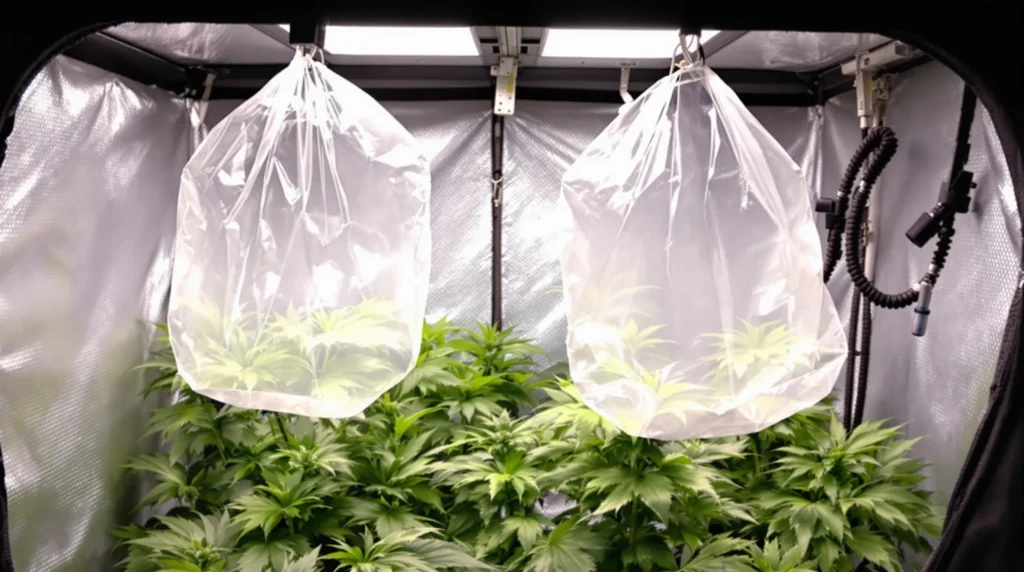
Questions About CO2 in Grow Tents
Adding CO2 to a grow tent can seem complex, so here are answers to common questions to help guide you.
How Often Should I Add CO2 to My Grow Tent?
The frequency of CO2 addition depends on your chosen method. Tanks and regulators allow for continuous CO2 release, which you can control based on plant needs. CO2 bags and pads typically release CO2 over a few weeks, while DIY generators may need more frequent attention. Monitoring your CO2 levels helps determine the ideal schedule.
What Are the Risks of Too Much CO2 in a Tent?
Excessive CO2 can stress cannabis plants, leading to yellowing leaves and stunted growth. High CO2 levels can also reduce oxygen, which plants need at night. Regular ventilation and monitoring help prevent these issues, keeping CO2 within safe, effective limits.
Does CO2 Really Increase Cannabis Yield?
Yes, using CO2 for grow tents can significantly increase cannabis yields. Higher CO2 levels enhance photosynthesis, allowing plants to grow faster and produce denser buds. Growers report larger, healthier harvests when CO2 is properly used, making it a valuable tool for serious cannabis cultivators.

